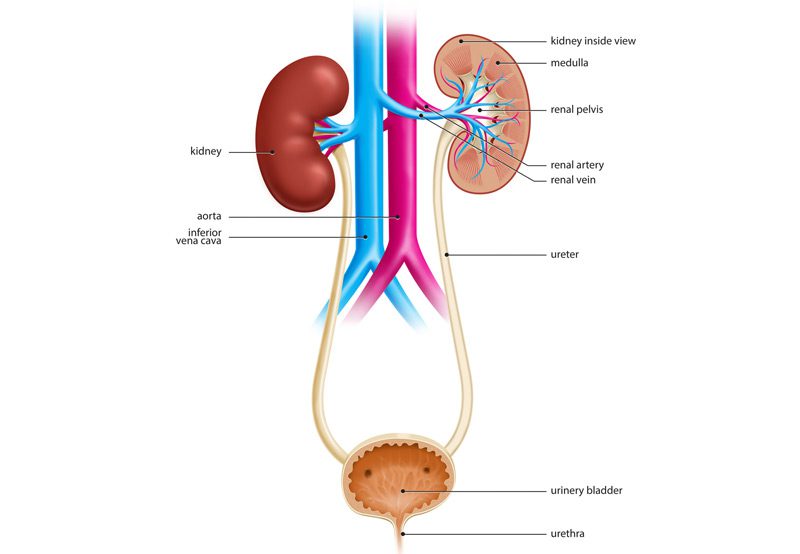

The artificial urinary sphincter is the gold standard for patients who are experiencing persistent stress urinary incontinence (SUI) after prostate cancer treatment.
Who Needs an Artificial Urinary Sphincter?
An artificial urinary sphincter may be a treatment option for patients experiencing:
- Stress incontinence
- Urinary problems caused by damage resulting from medical conditions such as cancer, a neurological condition, childbirth, or menopause
- Incontinence caused by surgical treatments
If conservative methods of treatment fail to provide relief for urinary incontinence, an artificial sphincter may be an effective option for patients who have no other medical problems affecting the urethra or bladder.

How an Artificial Urinary Sphincter Works
An artificial urinary sphincter is a prosthetic device consisting of a balloon and a control pump inserted into the scrotum. A fluid-filled ring (called a urethral cuff) made of silicone is attached around the bladder neck to keep the sphincter firmly closed until it’s time to urinate. A valve placed under the skin deflates the urethral cuff to allow urine to pass through.
During surgery, the physician will make an incision in the area between the rectum and scrotum to insert the pump. Another incision is made in the abdomen for the artificial urinary sphincter and balloon.
An artificial urinary sphincter may be necessary to address urinary control issues related to an enlarged prostate. If the prostate gland needs to be removed, an artificial sphincter may be inserted after the prostate is taken out.
Patients may experience some urine leakage after the insertion of an artificial urinary sphincter, but this usually stops within a few months. Leakage typically occurs at the place where the bladder connects with the urethra, which carries urine out of the body. If there aren’t other structural problems contributing to incontinence, the symptom may be corrected with the help of a tighter seal around the bladder neck to keep urine from leaking when it’s being held in the bladder.
Potential Results
The effectiveness of an artificial urinary sphincter in addressing urinary incontinence problems will depend on multiple factors, such as the patient’s overall health and whether or not there are underlying health issues.
The use of minimally invasive techniques to implant the artificial urinary sphincter further reduces the risks associated with prosthetic devices. In addition, patients enjoy shorter recovery periods.
Urinary incontinence isn’t hereditary, nor is it an illness. It’s usually a symptom of an underlying issue, although it may not be preventable in some cases.
Other Considerations
Patients may experience improvements with some urine control problems by making positive lifestyle changes. For instance, losing weight may reduce pressure on the bladder. Other steps patients could take to minimize UI symptoms include:
- Avoiding excessively acidic or spicy foods
- Eating more fiber-rich foods
- Quitting smoking
Dr. Akhil K. Das has helped many patients experience relief from symptoms of urinary incontinence through the insertion of an artificial urinary sphincter. Contact the office today to schedule an appointment and to find out if you’re a good candidate for treatment with an artificial urinary sphincter.

